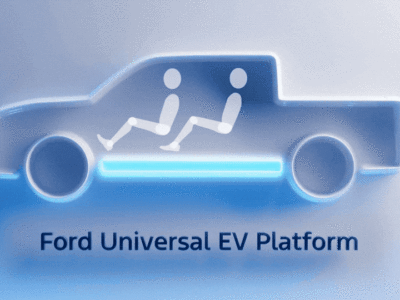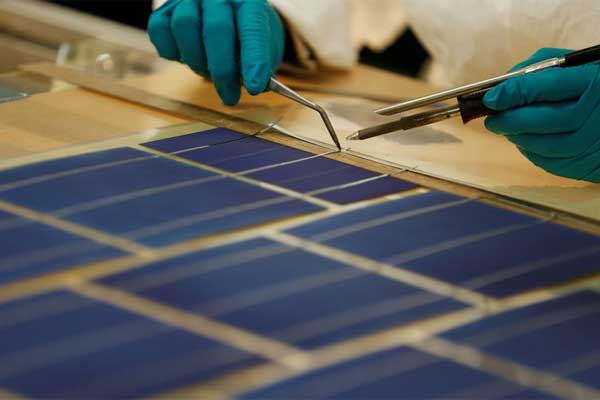- Gen 3 PUREVAP™ QRR Pilot Plant commissioning and testing program will start in full force Q1 2020.
- HPQ and PyroGenesis recently announced plans regarding the creation of a Joint Venture to produce Nanoscale Structure Silicon (Si) powders for Li-ion batteries.
- HPQ started discussions with a battery manufacturer regarding using Silicon produced in Gen3 to manufacture porous silicon wafers needed for their operations.
Montreal — HPQ Silicon Resources Inc. is pleased to update shareholders on the Corporation’s plans for 2020.
KEY 2020 PUREVAP™ DEVELOPMENTS THAT WILL DRIVE HPQ FORWARD
1. Gen 3 PUREVAP™ QRR Pilot Plant operational Q1 2020
PyroGenesis Canada Inc. informed HPQ that the Pilot Plant commissioning and testing program will start in full force Q1 2020.
“As previously discussed, a good part of the past year saw us divert assets from paying projects to non-paying projects. This enabled PyroGenesis to secure the large breakout contract it recently announced as well as the upcoming Navy project, which was also recently announced. As a result, our signed backlog increased from $6MM in Q2 2019 to almost $30MM at the end of Q3 2019. The successful closing of the Navy project will further increase this backlog by an additional $13MM. This increase in backlog de-risks the company significantly, all to the benefit of our clients, like HPQ, and their shareholders,” said P. Peter Pascali, President and CEO of PyroGenesis Canada Inc. “We are now in a position to re-focus and accelerate, the PUREVAP™ initiative focuses on the multitude of opportunities that have come to light since defining our original mandate. As a result, we are confident that HPQ is going to make some significant headway over the coming months, the least of which will be to start the Gen3 PUREVAP™ Plant commissioning and testing program.
“HPQ congratulates our partner P. Peter Pascali and his PyroGenesis team on their $20 million contract award, which once again proves their ability to commercialize high tech applications on a global scale,” said Bernard Tourillon, President & CEO of HPQ Silicon. “With the PUREVAP™ Pilot Plant becoming operational in Q1 2020, we now have even greater confidence in our joint ability to deliver the critical Silicon material required by the surging Li-ion battery market in 2020 and beyond.”
The PUREVAP™ QRR technology is a unique carbothermic process that will allow HPQ to have a significant impact, short and long term, on the following Silicon (Si) markets and industries:
2. Nanoscale Structure Silicon Powders manufacturing for Li-ion batteries
HPQ and PyroGenesis recently announced plans regarding the creation of a Joint Venture to produce Nanoscale Structure Silicon (Si) powders for Li-ion batteries. In Q1 2020, the plan is to have a modified Gen2 PUREVAP™ reactor operational, in parallel with the Pilot Plant, validating that our approach works and producing Nanoscale Structure Silicon (Si) powders samples for industry participants and research institutions.
Nanoscale Structure Silicon Powders improve Li-ion battery performance but high-performance Silicon (Si) anodes made using powders selling for US$ 30,000/kg1 are not commercially feasible. Combining HPQ PUREVAP™ Quartz Reduction Reactor (“QRR”) technology with PyroGenesis Plasma Atomization knowhow to produce Nanoscale Structure Silicon (Si) powders represents a unique multibillion-dollar business opportunity that could subsequently lead to their wide-scale adoption in the battery market. If this occurs, HPQ and PyroGenesis would then be well-positioned to assume a dominant market position.
Silicon’s potential to meet energy storage demand is undeniable and generating massive investments, as well as, serious industry interest, so HPQ and PyroGenesis timing could not be better. A recent report by Wood Mackenzie Power projects that energy storage deployments are estimated to grow 1,300% from a 12 Gigawatt-hour market in 2018 to a 158 Gigawatt-hour market in 2024. An estimated US$71 billion in investments will be made into storage systems where batteries will make up the lion’s share of capital deployment.
3. Porous Silicon wafers for solid-state Li-ion Batteries
During Q3 2019, HPQ started discussions with a battery manufacturer regarding using Silicon produced by our Gen3 PUREVAP™ QRR pilot plant to manufacture porous silicon wafers needed for their operations. Furthermore, HPQ negotiated with Apollon Solar an amended agreement that broadens the scope of the 2017 collaboration to include, going forward, evaluating manufacturing porous Silicon wafers for solid-state Li-Ion batteries combining their patented process with Silicon (Si) produced with HPQ PUREVAP™ QRR.
In November 2019, HPQ and its partner Apollon Solar SAS, acting as one party, signed a non-disclosure agreement (“NDA”) with the battery manufacturer for the purposes of exchanging technical information and sending testing materials. We are still at the beginning of the process of exchanging technical information and yet we are already looking into the possibility of supplying the battery manufacturer with the first Silicon wafer for testing by year-end or beginning of 2020.
The probabilities that the discussions started under NDA will evolve during Q1 2020 to a more formal process are very encouraging.
4. High Purity Silicon Oxide (SiOx) Nanopowders for Li-ion Batteries
In addition to its wafer work, HPQ intends to study, during H1 2020, the possibility of utilizing Apollon Solar patented process to optimize the porous structure of HPQ PUREVAP™ Silicon between Microporous (pore size <5nm), Mesoporous (pore size 5nm – 50nm) and Macroporous (pore size >50nm) in order to evaluate the potential of producing, low cost, High Purity SiOx Nanopowders.
The infancy of Si anode technology base on Nanoscale Structure Silicon Powders explains why presently only limited performance improvement is obtained using High Purity Silicon Oxide (SiOx) Nanopowders, selling for about US$ 100/kg2, used in a blended form with graphite in traditional Li-ion batteries. The quantity used is typically less than 5 wt% of the material used to make the batteries, yet even at these levels of utilization, this is estimated to represent an addressable market of US $ 1B by 20223 expanding at a CAGR of 38.9% between 2019 – 2024.
5. Standard purity Silicon (“Si”) (up to 2N Purity)
Up to now, market participants with significant quartz assets have shown a keen interest in our process. As such, HPQ anticipates silicon industry participants will show a keen interest in PUREVAP™ once the Pilot Plant is operational and validates our unique operational advantages.
The addressable market for Mg Si is in the multi-billion range with demand projected to increase by a CAGR of 19% over the next 5 years (US$ 7.5B in 2018 to US$ 12B in 2023)4. The bulk of the growth is expected to come from the 2N segment of the market, where the PUREVAP™ QRR process should have massive opex and capex advantage over traditional manufacturers.
6. Solar Grade Silicon using a PUREVAP™ UMG metallurgical process
The market for Solar Grade Silicon is massive and evolving at such an accelerated pace that some of our original product development hypothesis is not as relevant as before. Having said this, working with Apollon Solar, we strongly believe that if the PUREVAP™ QRR can produce, as we believe it can, Si material of 4N+ purity with low boron count (< 1 ppm), we can develop a very competitive UMG Metallurgical route to produce Solar Grade Silicon. OTHER CORPORATE NEWS 1. ANNUAL MINIMUM ROYALTIES PAYMENT DUES TO PYROGENESIS Under the terms of our Agreement with PyroGenesis, HPQ was obliged to pay minimum royalty payment obligations of $150,000 for 2018 and $200,000 for 2019. Due to delays in the project beyond HPQ’s control, PyroGenesis has agreed to wave HPQ minimum royalty payment obligations for 2018 and 2019. This represents a Q4 2019 reduction in HPQ current liabilities of $350,000. Minimum royalties’ obligations will resume with the scheduled 2020 payment to PyroGenesis. 2. WARRANTS EXTENSION HPQ Board of Directors has authorized the application to the TSX Venture Exchange (the “Exchange”) for approval of the extension, until January 31, 2022, of the exercise date of 4,152,000 outstanding common share purchase warrants (the “Warrants”) issued by the Company July 17, 2018. The 4,152,000 Warrants are set to expire on January 17, 2020 and have an exercise price of $0.155. As of today, none of these purchase warrants has been exercised. All other terms and conditions of the Warrants will remain the same. The proposed extension is conditional upon the receipt of the approval of the Exchange. 3. DEBT FOR SHARES In accordance with the agreement between HPQ-Silicon and Agoracom, entered into on July 15, 2018 for the term ending July 15, 2020, HPQ-Silicon board has approved the issuance of 156,944 common shares at a deemed price of 9 cents per share to pay $14,125 for services rendered during the period from January 16, 2019 ending April 15, 2019, HPQ board has also approved the issuance of 156,944 common shares at a deemed price of 9 cents per share to pay $14,125 for services rendered during the period from April 16, 2019 ending July 15, 2019, and HPQ board has also approved the issuance of 166,176 common shares at a deemed price of 8.5 cents per share to pay $14,125 for services rendered during the period from July 16, 2019 ending October 15, 2019. Each share issued pursuant to the debt settlement will have a mandatory four (4) month and one (1) day holding period from the date of closing.














Comments